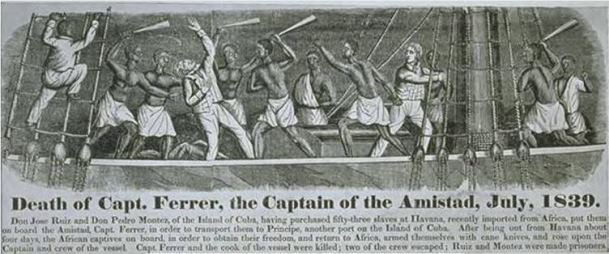The Supreme Court issued a ruling on March 9, 1841, freeing the remaining thirty-five survivors of the Amistad mutiny. Although seven of the nine justices on the court hailed from Southern states, only one dissented from Justice Joseph Story’s majority opinion. Private donations ensured the Africans’ safe return to Sierra Leone in January 1842.

BTW, Connecticut Congregationalists formed the Amistad Committee, which organized a legal defense, eased the captives’ confinement during the lengthy court case, and eventually funded their return to Africa after winning a favorable decision from the US Supreme Court. Talcott Street Congregational Church, ancestor congregation of Faith Congregational Church (founded in 1819 and CT’s oldest black congregation) played an important role in the entire event, raising money to assist in the defense, and sent 2 missionaries to accompany the former captives back to Africa.
The Amistad Committee became a seed for wider advocacy for the abolition of slavery in the United States. In 1846, Lewis Tappan, an Amistad Committee leader, founded the American Missionary Association, the first abolitionist organization with integrated leadership. After the Civil War, the AMA went on to found schools, churches, libraries, and universities for the newly freed African Americans of the South.
The AMA founded nine predominantly black colleges: Atlanta University, Dillard University, Fisk University, Hampton Institute (now Hampton University), Howard University, Huston-Tillotson College, LeMoyne College (now LeMoyne-Owen College), Talladega College, and Tougaloo College; it was also instrumental in founding the racially integrated Berea College.